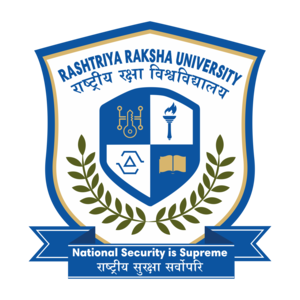
Bois Locker Room – Another Ugly face of Cyber Crime
Bois Locker Room – Another Ugly face of Cyber Crime
- Amarpal Singh, School of Law, UPES Dehradun
Introduction -
Over the years there has been a rapid increase in the use of the Internet especially among the teenagers this has led to an increase in crimes like voyeurism, publishing sexually explicit content, identity theft and cyberbullying. It is now a platform where one can easily maintain anonymity and commit these crimes. This is because the internet has become and continues to be a marketplace for evil ideas which the country and this world will continue to see in the future.
In unprecedented times during the widespread increase in the spread of the COVID 19 when the entire world was sitting in their houses due to the lockdown and education was being encouraged through the use of internet a horrific incident came to light where a girl shared various screenshots of an Instagram group chat where boys of the age group 15-17 based in Delhi and students of elite schools shared morphed pictures of under-age girls without their consent, objectified women and made plans to rape in a horrendous way. A suo- moto cognizance of the matter was taken by Delhi Commission for women and an FIR was registered with the Delhi police. The administrator of the group was taken into custody who was a 15-year-old boy and 22 other members were identified by the police.
Potential offences committed by the member of Bois Locker Room
As per the facts available the participants of the Instagram had morphed the pictures of young girls to deal with this issue section 463 ‘forgery’ of the Indian Penal Code ( hereinafter IPC) is the most appropriate which defines " any person who alters any electronic record with intent to cause any damage to other person commits forgery. In the case of SukantiChoudhry .v. State of Kerala the High of Kerala expressly stated that to constitute an offence of forgery any electronic record which has been altered or transmitted is done without the lawful authority of the person. In the instant matter, the member of the group did not have any lawful authority to alter the pictures of the girls.
The act of objectifying women and making a plan to rape also makes them liable under section 509 \'words, gesture or act intended to insult the modesty of woman’ which provides that any words uttered by a person to insult the modesty of a woman intending that such words are heard by the woman or intrudes the privacy the woman shall be liable under this section.
Information Technology Act 2000
In Information technology Act penal provision were added to create a safe online environment for everyone. The activity of publishing and transmitting obscene material and pictures of underage girls by the members of Instagram group chat makes them liable under Section 67, 67 A, 67B as these sections provide punishment for transmitting or publishing any obscene act, sexually explicit act and depicting children in sexually/obscene act. The punishment for first conviction under section 67 is fine with 3 years of imprisonment and 5 years imprisonment with fine for committing an offence under section 67 A and 67 B.
In the case of State of Uttar Pradesh.v. Aman Mittal & Ors. the apex court observed that all the provision contained in the Information Technology Act are of paramount importance especially if the offence relates to the electronic record.
Judicial Intervention in the matter.
A writ petition was filed in the Delhi High Court for the immediate arrest of the member of Bois locker room and seeking direction for investigation of the matter by Special Investigation Team or Central Bureau of Investigation. The division bench consisting of Justice Siddharth Mridul and Justice Talwant Singh directed the police to swiftly complete the investigation and file the report with the appropriate court concerned with the matter. Another letter petition was also filed with Supreme Court to take the matter on the judicial side as there are multiple issues which arose from the incident relating to the privacy of young girls and sensitization of juveniles in the involving themselves in such acts.
Application of Juvenile Justice Act.
Most of the members of the Instagram group chat were between the age of 15-17 thus are covered within the ambit of the definition of child in conflict with the law as defined section 2 (13) of the Juvenile Justice Act 2015 as it states that any person who is alleged or found to have committed an offence and who has not completed the age of 18 years on the date of commission f such offence. Thus, the provision of the JJ Act would be applicable in this matter.
After the screenshots went viral on social media there was an outrage by the public that the members of the group chat should be treated as adults which is impossible in this matter. As these offences do not qualify as a heinous offence under section 2 (33) of the JJ Act. If the offences did qualify as heinous offence then only after preliminary assessment by the Juvenile Justice Board of their mental and physical capacity to understand the consequence of the act as specified in section 15 of the JJ act an order would have been passed in accordance with section 18 (3) to try them as adults.
The maximum punishment that is specified in the JJ Act is 3 years which would not less severe for these boys as the punishment for the offences committed by them is also 3 years.
Medial Trial – A different perspective
We live in a society which is limited by law but in the present times\' social media platforms are public courts and its users are judges. According to the rule of law, everyone has a right to a fair trial which is also enshrined in Article 14 ‘right to equality’ and Article 21 ‘right to life’’in the Constitution of India. The public opinion about the guilt of the person violates the presumption of innocence unless proved guilty and devoid the accused his right of fair hearing.
Moreover, section 74 of the JJ Act states the identity of a child in conflict with the law should not be revealed. In the case ofSubash Chandra Rai .v. State of Sikkim the High Court held that police, media and as well as the judiciary has to be very sensitive while dealing with a child in a conflict that provision of section 74 has to be strictly complied and under no circumstances, the identity of the child in conflict with law should be revealed. In contrary to the provision the identities of the members of the group are all over the social media. Thus, this also raises a serious concern about whether re-integration and rehabilitation of these juveniles would be possible in accordance with the objectives of the juvenile justice act.
A way forward:
Bois locker room incident is not the only one but there are millions of similar instances of cybercrime which go unreported and fail to catch the limelight. The solution to prevent these types of incidents is cyber education, monitoring the use of social media accounts of teenagers by parents, reporting the incidence and psychological support to the victim. An online platform cybercrime.gov.in is also maintained by the Ministry of Home Affairs with a special option to anonymously report the crime, especially for women and children. All the incident of cybercrimes must be reported so the perpetrators are identified and an example to the society is served to prevent similar incidents. As rule of law also postulates creating a safe environment of everybody in society.
References -
1. 2013 (I) OLR 742.
2. 2019 (4) RCR (Criminal) 253.
3. 2018 CriLJ 3146.
4. Vakasha Sachdev, ‘Can members of the “bois locker room” member punished under the law’(2020) <https://www.thequint.com/news/law/boys-locker-room-criminal-offences-ipc-it-act-pocso-sharing-images-underage-girls> accessed 7 June 2020.
5. Sadhana NadathurJaykumar, ‘Bois Locker Room : Why does’nt the Incident Surprise women’ <https://feminisminindia.com/2020/05/05/bois-locker-room-doesnt-incident-surprise-women/> accessed 7 June 2020.
6. Aditi Singh, ‘Delhi High Court directs Police to expeditiously complete probe in bois locker room’<https://www.barandbench.com/news/litigation/delhi-high-court-directs-police-to-provide-safety-to-girls-who-exposed-bois-locker-room> accessed 7 June 2020.
7.Debayan Roy : ‘Bois locker Room Scandal : Letter petition urges Supreme Court to take up issue on judicial side’ <https://www.barandbench.com/news/litigation/delhi-high-court-directs-police-to-provide-safety-to-girls-who-exposed-bois-locker-room> accessed 7 June 2020.












